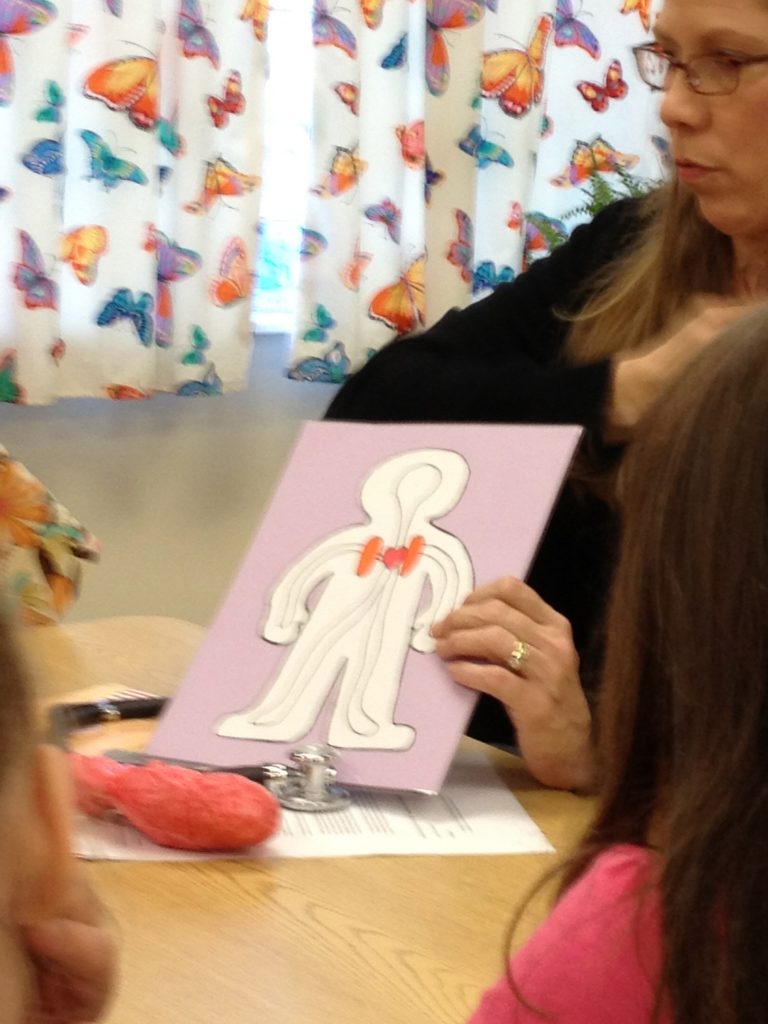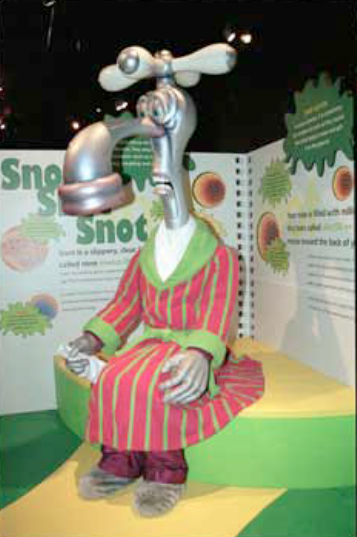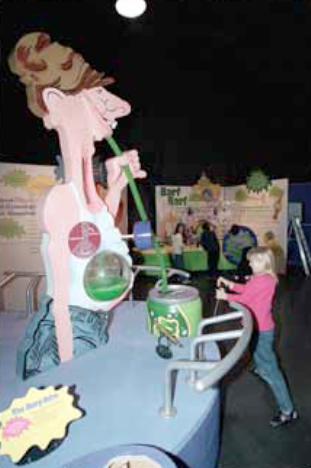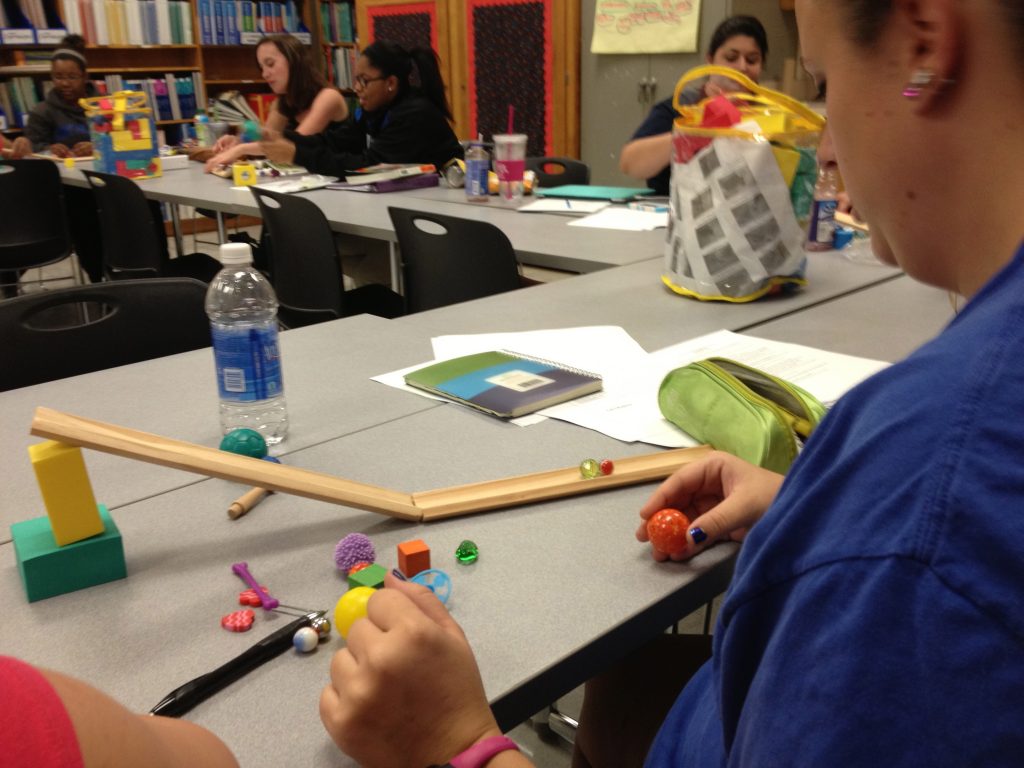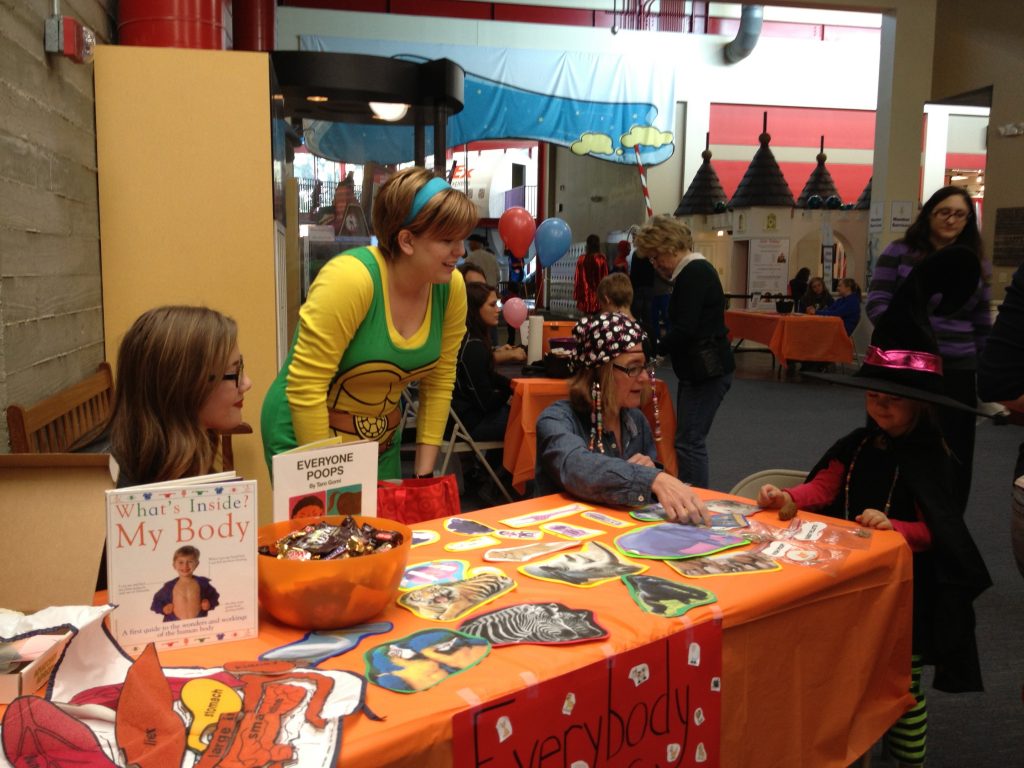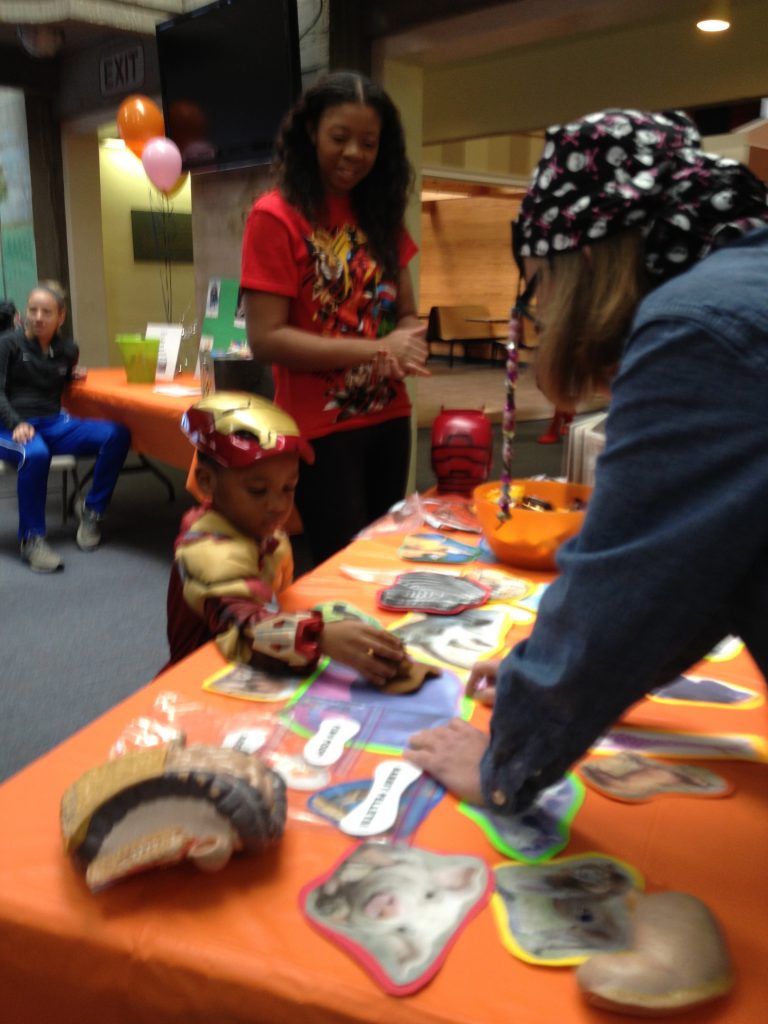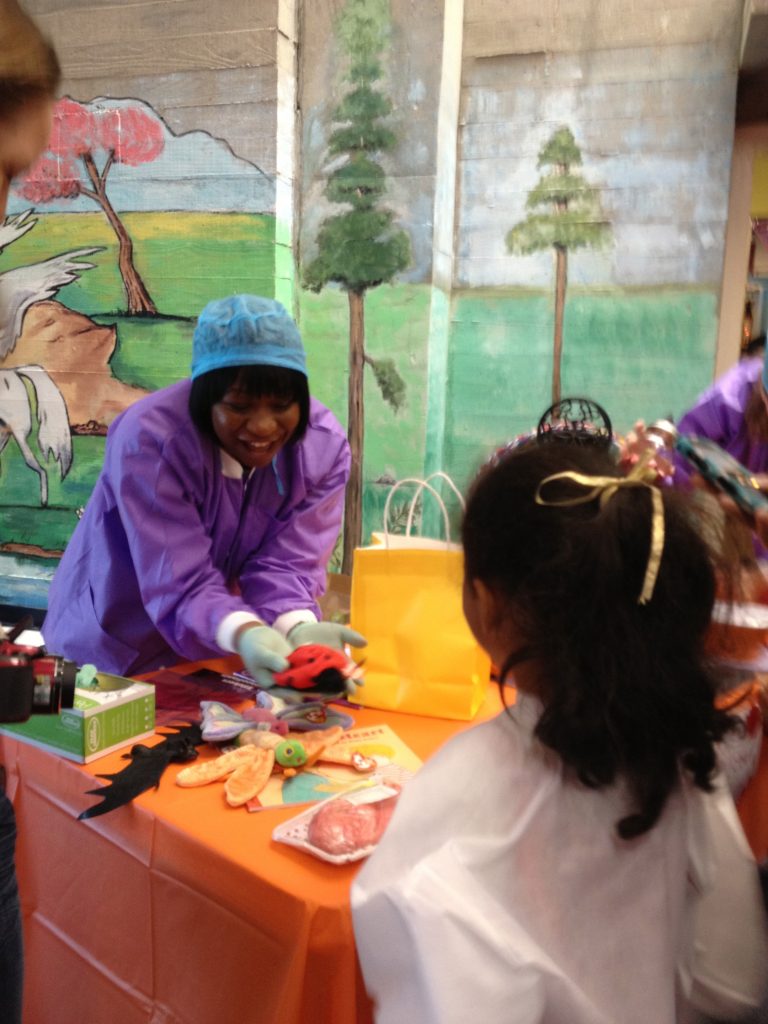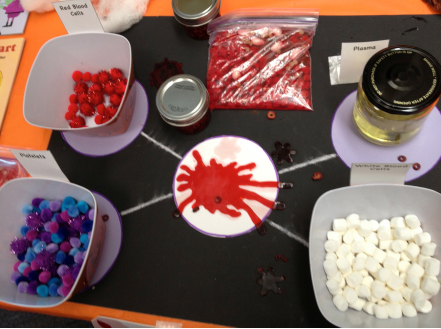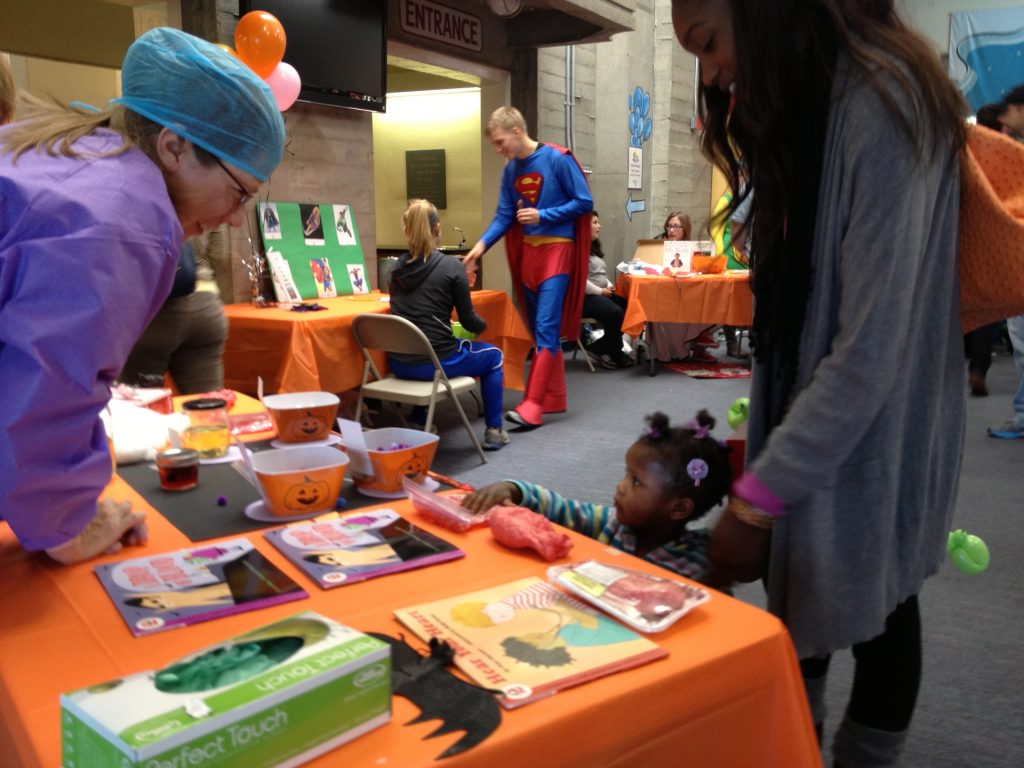Feature
Increasing STEM Outcomes Through Quality Collaborations
It Takes a Village to Prepare High-Quality STEM Educators
Connected Science Learning October-December 2017 (Volume 1, Issue 4)
By Shelly L. Counsell and Felicia Peat
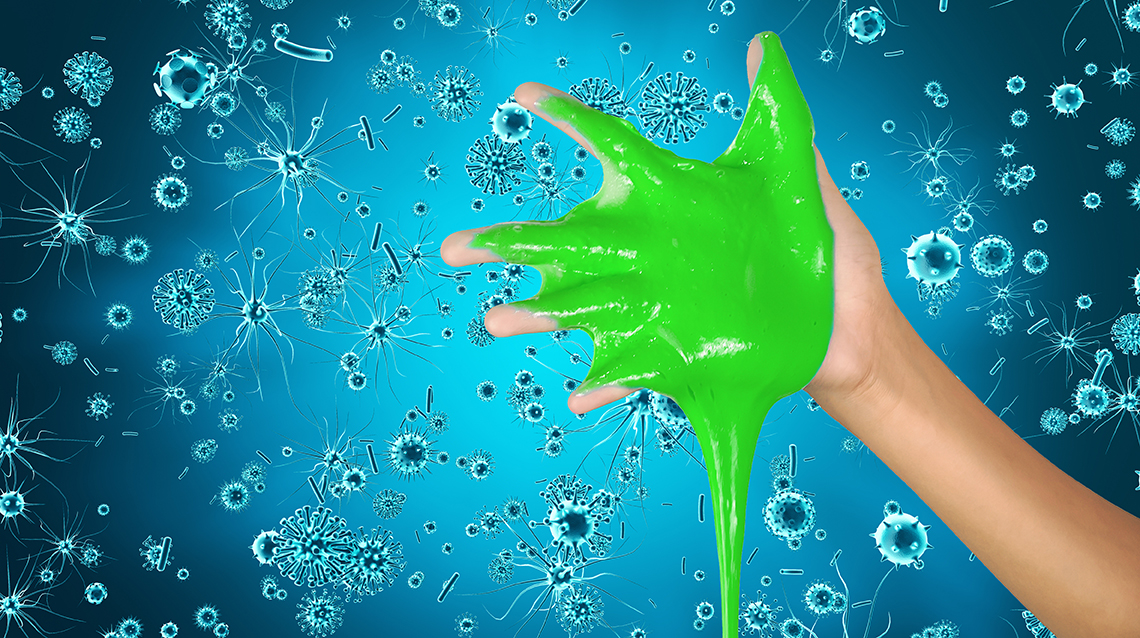
Discover how early childhood faculty at the University of Memphis launched a new collaborative partnership with the Children’s Museum of Memphis to develop and implement early STEM learning activities during a teaching course requirement and field experience.
Studies dating back to the 1990s have often highlighted U.S. students’ poor performance in school science programs, which researchers attribute to curriculum structure, textbooks, instructional approaches, and the overall quality of teaching professionals (Schmidt, McKnight, and Raizen 1996). In the United States, teaching isolated science facts through passive lectures and demonstrations has long dominated science education (Hunefeld 2009). Piaget (1973) criticized this instructional technique, stating that it makes students passive learners who merely mimic the teacher’s procedures and explanations.
Because passive teaching methods dominate U.S. science education, many educators are themselves products of textbook-centered, unequitable, and culturally unresponsive learning. Thus, it is easy for science educators to fall back on the top-down instruction they experienced as learners, perpetuating practices that fail to stimulate student interest and excitement toward learning science and negatively impacting learning outcomes (Jarvis and Pell 2004).
Too many preservice and inservice teachers in the primary grades demonstrate low levels of scientific knowledge and technological literacy (Palmer 2006). Many preschool and elementary teachers experience anxiety, low self-confidence, and gendered assumptions about STEM topics that, in turn, can be transferred to young learners (McClure et al. 2017). If early childhood educators did not actively experience and enjoy STEM (science, technology, engineering, and mathematics) investigations as young learners, it is unlikely that they will promote appropriate STEM activities in their own classrooms. Any effort to break this pervasive cycle among early childhood educators, who are predominantly women, will require improved teacher preparation and learning experiences in STEM education. This requires a deliberate focus on challenging teachers’ attitudes, beliefs, and assumptions toward teaching early STEM with young children while exploring beliefs about who can be a scientist, science educator, and science learner.
As argued by Counsell (2011), teachers (both preservice and inservice) cannot be expected to design and implement science activities, investigations, and experiments for children if they have “no firsthand experience engaging in scientific activities, investigations, or experimentation as science learners” (p. 54). Educators must be able to conceptualize and formulate their own compelling questions and problems as they think scientifically, analyze phenomena, and engage in meaningful discourse with peers as science learners. It is only after they have learned and practiced these skills that they are empowered to transform and reinvent science teaching practices and activities as educators.
High-quality early childhood experiences include appropriate STEM explorations and investigations, and high-quality educators are prepared to access community resources and form STEM partnerships with collaborators in ways that will enrich, enhance, and improve STEM learning for young children. Such partnerships ideally use real-world contexts and applications within formal and informal settings. This article describes how the early childhood education (ECE) program at the University of Memphis joined forces with the Children’s Museum of Memphis (CMOM) to combine their talents, skills, and resources in an ongoing effort to improve STEM outcomes for children and preservice and inservice teachers in preschool and primary grades. ECE and CMOM’s partnership provides preservice teacher candidates (undergraduate and graduate students concurrently enrolled in an early childhood math and science methods course) the unique opportunity to develop science units that can be implemented with young children in a museum and in early childhood and primary grade classroom settings.
The course discussed in this article enrolled 10 early childhood preservice undergraduate teacher candidates and three early childhood master of arts in teaching (MAT) candidates. All 13 candidates were female, and four candidates were African American (three undergraduate candidates and one graduate candidate). The remaining nine candidates were white. Although no external funding supported ECE and CMOM’s collaboration, the educational programming department at CMOM had available funds to purchase the supplies used by the teacher candidates to complete the STEM activities with young children at CMOM and across the other assigned classroom settings.
A University–Museum Partnership
ECE and CMOM collaborated to develop a three-credit-hour math and science early childhood education course that required teacher candidates to engage in scientific activities, investigations, or experiments as learners, so that they would be ready to successfully prepare, develop, and implement STEM activities with young children. The course is organized according to three main teaching-learning activities:
- lecture and discussion,
- engaging in cooperative learning opportunities and experiences, and
- group project work.
Teacher candidates are encouraged to actively explore STEM content using Socratic dialectic discourse and inquiry-based pedagogy. Both techniques are designed to empower candidates to pose and answer questions and explore early childhood education content and issues. A variety of games, activities, and materials (such as building with blocks or playing games such as tic-tac-toe or dominoes) are used to help teacher candidates understand and apply Piaget’s theory of cognitive developmental stages to plan STEM instruction for young children. Teacher candidates, as STEM learners, actively participate in a series of in-class investigations that model:
- a learning cycle approach to STEM teaching;
- inquiry teaching practices, including productive questioning, to guide STEM explorations (see Figure 1 below);
- Bloom’s taxonomy, a helpful framework to guide higher-order thinking and learning; and
- Thinking Maps (Hyerle and Alper 2014), a metacognitive tool that encourages higher-order thinking (see Figure 2 below).
Figure 1
Productive Questioning
A graduate early childhood candidate uses productive questions to guide children’s thinking about the circulatory system.
Figure 2
Thinking Maps
A graduate early childhood candidate uses a Tree Map to help children visually group and sort (classify) different animals according to blood color.
In addition to preparing early childhood teacher candidates to promote STEM teaching and learning, it was equally imperative to introduce them to content and curricular integration as essential parts of lesson planning. Although Tennessee students in grades 3–5 have made steady gains in math (2010–2015), student gains in language arts performance (2010–2015) have remained stagnant or declined (Tennessee Department of Education 2016). In response to students’ ongoing struggles with reading achievement, one of Tennessee’s academic goals is to have 75% of third graders reading on grade level by 2025. Therefore, teacher candidates must be prepared to strategically integrate math and science with literacy to make STEM investigations authentic contexts for reading and writing. Our teacher candidates had to integrate developmentally appropriate content standards and learning objectives for literacy, math, and science within each lesson plan. This requirement helped candidates understand that content integration is an efficient way to maximize teaching, instructional time, and learner outcomes across multiple content areas.
At the outset of the semester, the CMOM director of education and programs spoke to candidates about:
- CMOM’s vision, mission, philosophy, and goals for serving young children and families in Memphis;
- CMOM’s role as a key community resource for local schools, to whom it provides various STEM exhibits, workshops, and programs that support teachers’ STEM professional development and instructional practices with young children (CMOM promotes STEM teaching and learning through permanent exhibits, traveling exhibits, children’s camps, special events, and teacher workshops); and
- the traveling Grossology exhibit as a special feature for STEM teaching and learning at the museum.
Grossology Traveling Exhibit
In fall 2013, the traveling exhibit “Grossology: The (Impolite) Science of the Human Body” visited CMOM. Based on the best-selling book, Grossology by Sylvia Branzel, this exhibit uses sophisticated animatronics to engage children in thinking about the biology behind runny noses, body odor, burping, farting, urine, and more. Figures 3 and 4 provide examples of Grossology’s runny nose and farting exhibits.
To further capitalize on the exhibit’s connections to real-life applications of biology and human anatomy, the course instructor had the candidates work in groups. Each group designed and implemented one Grossology-related STEM unit. Unit activities were modified (e.g., selecting different children’s literature according to children’s age and development or having young children draw pictures while older children write words on thinking maps) to accommodate children’s learning and development across three different age groups:
- preschool-age within formal classroom setting;
- primary grades–age within formal classroom settings; and
- children ages 3–12 within an informal setting at CMOM.
Each group’s unit was based on one of the following topics:
- Everybody Poops
- Everybody Sheds
- Everybody Spits
- Everybody Bleeds
During a visit to the University of Memphis, CMOM’s director of education and programs and the course instructor helped the groups begin to brainstorm possible STEM activities related to their assigned Grossology topic. Before the CMOM director left, each group scheduled a day and time to meet with her at the museum. The scheduled meetings with the director allowed each group to:
- tour the museum,
- examine and discuss the Grossology exhibit,
- discuss proposed Grossology-related STEM activities intended to complement children’s STEM thinking and learning; and
- develop a list of supplies needed for implementation.
As the semester progressed, candidates participated in different STEM investigations (e.g., dissecting a bird’s nest, exploring bubbles, investigating cooking, learning about force and motion with Ramps and Pathways). The course’s science investigations were designed to actively engage the teacher candidates in structuring and guiding STEM teaching using:
- learning cycle phases,
- productive questioning,
- Bloom’s taxonomy, and
- Thinking Maps.
Learning cycle phases, productive questioning, and Thinking Maps are discussed below. Figures 5 and 6 demonstrate early childhood teacher candidates pursuing their own questions as they investigate force and motion using Ramps and Pathways materials and activities.
Figure 5
Ramps and Pathways in Action
An early childhood teacher candidate releases objects on an incline, using Ramps and Pathways to construct mental relationships related to shape and motion.
Figure 6
Exploring Forces
During a Ramps and Pathways investigation, an early childhood teacher candidate positions blocks to provide the pushing force an object needs to turn a corner at the end of its trajectory.
Grossology Lesson Plans and the Monster Bash: Learning Cycle Phases and Productive Questioning
Each candidate designed one lesson plan that contributed to her group’s STEM unit. Each lesson plan followed a learning cycle process of exploration, concept development, and application (Cooney, Escalada, and Unruh 2005). During the exploration phase, children actively explore and manipulate materials as they interact with each other. After children finish exploring materials, the teacher discusses and asks questions about what children observed, clarifying and expanding on children’s understanding by introducing new concepts and vocabulary (concept development phase) as appropriate. In the final application phase, children are provided opportunities to integrate new ideas with old ideas, often during continued investigations.
Each teacher candidate integrated Elstgeest’s (2001) six types of productive questions across the learning cycle phases to support children’s higher-order thinking, STEM understanding, and reasoning.
For the unit Everybody Poops, for example, the teacher candidates researched the topic to identify three strands of subtopics that would be relevant to and developmentally appropriate for young children. These subtopics were:
- the digestive system and how it works,
- how other animals digest food, and
- health and hand washing.
The candidate in this group who explored animal food digestion created learning activities and selected a children’s book to help young children construct the relationship between food digestion and waste elimination. Guided by the TN-ELDS (Tennessee-Early Learning Developmental Standards) for age 4, this candidate read Everybody Poops by Taro Gomi to preschoolers during the concept development phase. Children were encouraged to ask and answer questions about the text (addressing standard TN-ELDS RL.PK.1) and develop new vocabulary through meaningful discussions and activities (TN-ELDS RL.PK.4). The teacher candidate discussed terms used to signify poop (e.g., bowel movement, feces, excrement, number two, dung). The teacher candidate also prepared homemade clay dyed a dark brown and molded the clay to resemble the size and shape of different animal feces. Students sorted, classified, and matched the different animals with the correct feces (TN-ELDS PK.MD.3).
Tapping into the preschoolers’ own prior knowledge of and experiences with digesting and eliminating their waste (e.g., the feces’ general size, shape, odor, color), the teacher candidate used the productive questions listed below to help guide children’s thinking during the discussion. Productive questions are open-ended questions that encourage and promote children’s higher-order thinking by tapping into their scientific reasoning and understanding (Counsell et al. 2015). The questions also encouraged the preschoolers to make predictions (TN-ELDS S.PK.2) regarding which feces would most likely be discharged by different animals.
- Attention-focusing question: What do you notice about the mouse’s feces?
- Measuring and counting question: How big are elephant feces? How big are mouse feces?
- Comparison question: Which animal is bigger, the elephant or mouse? Which animal will discharge the biggest feces, the elephant or the mouse?
For added enrichment, preschoolers could also take a class field trip to a local pet store to observe and examine:
- the different animals at the store (e.g., puppies, kittens, rabbits, hamsters, parakeets, turtles, snakes, fish),
- the different foods that animals eat, and
- the different feces that animals eliminate.
Figures 7 and 8 illustrate teacher candidates as they engaged children in discussions about digestion and animal feces during the Monster Bash at CMOM. The CMOM Monster Bash was a not-scary Halloween celebration featuring spooky crafts, candy stations, costume parades, and more. The Monster Bash event took place during the visiting Grossology Exhibit.
Figure 7
Engagement at the Monster Bash
Early childhood teacher candidates at the Everybody Poops booth are prepared to discuss digestion and animal feces with young children.
Figure 8
Reaching Young Children
An early childhood teacher candidate discusses different animal feces with a child.
Graphic Organizers: Thinking Maps
In addition to learning cycles and productive questions, teacher candidates also used at least one of eight visual organization tools known as Thinking Maps (Hyerle and Alper 2014). Thinking Maps not only help teachers and children visualize ideas, but more importantly, they also illustrate eight fundamental thinking processes. The eight Thinking Maps and associated thinking processes are:
- Circle Map (brainstorming)
- Bubble Map (describing qualities)
- Double Bubble Map (comparing and contrasting)
- Tree Map (classifying)
- Brace Map (part/whole relationships)
- Flow Map (sequencing)
- Multiflow Map (cause and effect)
- Bridge Map (seeing analogies)
Using an iterative process, the teacher candidates individually implemented their unit lesson plan across three settings: the Barbara K. Lipman School & Research Institute at the University of Memphis (ages 2–5), a Shelby County Schools primary grade (K–2) classroom, and CMOM. This innovative approach to teacher preparation enabled the teacher candidates to modify, reteach, and reflect on a single unit to develop their skills as reflective practitioners who can make adjustments for different age groups and contexts, whether in a formal or an informal setting. Typically, teacher candidate practicum assignments entail teaching a series of lesson plans with the same group of children in the same setting, without any opportunity to revisit, improve, or reteach individual lessons. With this fact in mind, our course assignment required each teacher candidate to:
- revisit the same lesson plan on three occasions;
- reflect on the teaching and learning process each time, considering areas of strength and areas to improve;
- complete the necessary curricular and instructional changes for the next group of learners; and
- make any needed changes or improvements to increase children’s STEM interest and engagement and, ultimately, lead to improved learner outcomes.
All candidates first implemented their individual lesson plans in early childhood classrooms at the Lipman School. Due to the public school’s scheduling constraints, the candidates had to negotiate a day and time that worked best for their assigned classroom mentor teacher. Candidates were not required to teach their STEM lessons in a K–3 classroom setting prior to the Monster Bash. Candidates who taught their lessons with two different age groups prior to the CMOM experience, however, indicated that they felt more relaxed and better prepared to implement the STEM activities with a wider age range of children during the Monster Bash.
The arrangement at the Lipman School allowed candidates to have a maximum teaching and learning experience. Each candidate modified her lesson plan’s integrated content standards with learning objectives, materials, and activities to accommodate each age group, setting, and schedule, as well as the children’s developmental levels and learning styles. The standards used included:
- Common Core State Standards
- Next Generation Science Standards
- Tennessee Early Learning Developmental Standards, 0–5 years
- Tennessee Science Standards (TN-ELDS)
In addition to completing two teaching experiences within formal classroom settings, teacher candidates also tested their lesson plans at CMOM, an informal setting serving children ages 3–12 and their families. This placement allowed candidates to engage with children from a wider age range and their families in STEM activities that could not be done in traditional settings, which expanded candidates’ teaching–learning experience. Teacher candidates also increased their familiarity with the museum as a resource for professional development, field trips, and educational programming.
In October, the teacher candidates also implemented STEM learning activities with young children and families they had not previously met during the CMOM Monster Bash event. Tables were set up outside the Grossology exhibit, and children and families circulated at their own pace, engaging in different STEM activities based on the Grossology unit themes.
This informal teaching experience encouraged teacher candidates to be flexible and think on their feet as they engaged with children of different ages and developmental levels in a less-structured setting. Although some families included young children’s siblings, many parents only brought one child, with whom the candidates needed to connect on an individual basis by following the child’s lead and individualizing the activity as needed (e.g., showing younger children pictures in books, reading the books to older children, allowing even older children to read the books). The Monster Bash was a one-time event that did not provide candidates additional opportunities to implement their prepared Grossology STEM activities at the museum. In the future, CMOM could incorporate opportunities for parents to provide valuable feedback to teacher candidates, which they could then use to further increase children’s STEM interest.
At the Monster Bash event, the Everybody Bleeds group used a Bubble Map (see Figure 4) to help children visualize and name the parts of human blood (e.g., red blood cells, white blood cells). During large-group instruction, teachers can use large floor Thinking Maps to facilitate concept development discussions and review and reflect on learning after discussion. Children can also complete individual Thinking Maps to document their STEM knowledge, understanding, and learning; these Thinking Maps can be used for assessment. Figures 9, 10, and 11 show the Everybody Bleeds group using a Bubble Map and discussing different animals’ circulatory systems during the Monster Bash.
Figure 9
Connecting During the Monster Bash
A graduate early childhood candidate discusses animal blood circulation with a child at the Everybody Bleeds booth.
Figure 10
Making Use of Maps
Graduate early childhood candidates use a Bubble Map to help children visualize and understand the different components of blood.
Figure 11
Discussing Science With Children
A graduate early childhood candidate discusses animal circulatory systems with a young child.
Preservice Teachers’ Testimonials
Reflection is an important evidence-based practitioner strategy used to improve teaching practices throughout the teaching–learning process. After they finished teaching the Grossology unit, preservice and MAT teacher candidates were asked to reflect on and write about their firsthand experiences with designing STEM learning activities for and implementing them with young children. Teacher candidates’ written reflections revealed an increased understanding that:
- high-quality, cooperative STEM investigations require substantial time for preparation and implementation to maximize learning outcomes, in contrast to other pedagogical activities such as guided reading;
- STEM learning needs to be individualized and connected to students’ prior knowledge; and
- using the learning cycle approach and inquiry strategies improve STEM instructional practices and increase children’s STEM learning outcomes.
Allowing Adequate Time for Deep and Thoughtful Investigations Is Essential
Many teacher candidates discussed the challenges of giving young children the extensive amounts of time needed to complete deep and thoughtful investigations. Young children often need multiple opportunities to engage in activities to fully understand STEM concepts and ideas. Increasing academic and accountability pressures placed on young children and educators creates a tendency to rush through the teaching process, as teachers race against the clock to cover content in science and other areas (Counsell and Wright 2015). As suggested by one teacher candidate:
Because of the standards and time constraints [imposed] on teachers now, integration [of content areas] is vital. I believe I had a wonderful practice with this during this experience.”
As noted by the candidate, the need to integrate concepts, ideas, skills, and relationships across content areas is vital to teachers today. Time is of the essence for both teachers and children. Integrating content areas saves instructional time, providing more learning opportunities for children.
Tapping into Children’s Prior Knowledge Individualizes and Maximizes Learning
Tapping into young children’s prior knowledge helps them connect to and expand on meanings, concepts, and relationships within their mental schema of understanding. Working in groups to develop units of study, teacher candidates came to better understand and appreciate the need to develop their lesson plans in an integrated, coherent fashion that scaffolded children’s learning from one lesson to the next, as noted by the following teacher candidate:
Providing [children] with the chance to construct their knowledge using prior experience helps their development in a holistic way.
Holistic, integrated teaching creates opportunities for children to learn about concepts based on their interests across subjects and developmental domains. Taking a holistic approach requires educators to prepare activities that are developmentally appropriate according to children’s age, interests, strengths, and culture. As the following teacher candidate stated:
This overall experience has been a pleasure … teaching the same lesson with different modifications to accommodate the students … [allowed me to experience] differentiation as well as developmentally appropriate practices. I will continue to work on planning lessons with higher-level thinking questions. I want to perfect the craft of generating questions that will challenge children to think …
Another teacher candidate echoed these thoughts:
Teaching the same lesson in different settings allowed me to see how important differentiating is. Teaching the same lesson with all levels of students … [and] just changing the standards and objectives and coming out with the same outcome … [was] a great opportunity to work closely with my classmates.
Giving early childhood teacher candidates the necessary knowledge, skills for working with diverse groups is essential. STEM learning activities should afford all young children multiple and varied learning opportunities (Counsell 2017; Counsell and Wright 2016). Science learning, in particular, provides young children with authentic, open-ended, experiences with hands-on, multisensory materials and rich opportunities for group work, all of which can be easily adapted for all learners. Future research needs to include longitudinal studies that examine whether teacher candidates continue to use inquiry-based science instruction in subsequent years as primary grade classroom teachers.
Conclusion
Overall, preservice and MAT teacher candidates reported increased confidence and willingness to teach science explorations and investigations with young children, as captured by this teacher candidate’s testimonial:
Much of my anxiety has subsided and I am more comfortable teaching and exploring science and math with my students and in my teaching … I am more confident in my abilities as a teacher … I am nowhere near being a science or math teacher … [but] I have gained the knowledge and resources I will need in order to give my students the necessary foundation within both subject areas.
At the end of the course, the early childhood teacher candidates reflected upon the place from where they started (as science learners), the distance they had traveled (as future science educators), and the progress that each candidate achieved in her individual development as a STEM learner and educator. The lifelong process of being an active science learner will guide these candidates to reinvent STEM learning opportunities and teaching practices in ways that benefit everyone, learners and educators alike.
Shelly L. Counsell (slcnsell@memphis.edu) is program coordinator for early childhood education at the University of Memphis in Memphis, Tennessee. Felicia Peat (fpeat@wkno.org) is program coordinator for Children’s Channel 24/7 at WKNO Public Broadcasting Station, Memphis, Tennessee.



